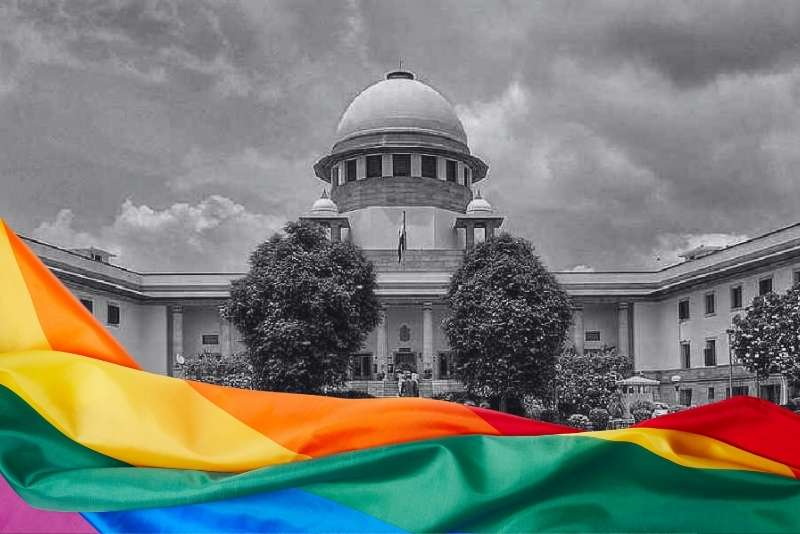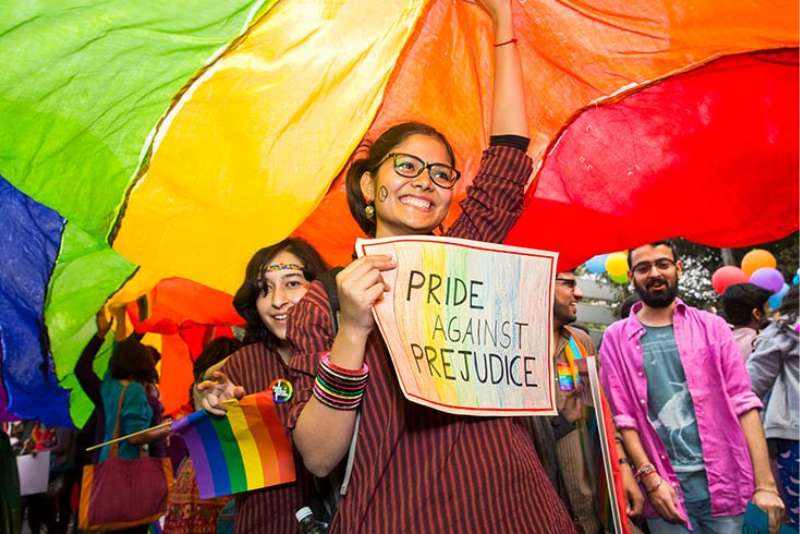
Supreme Court LGBTQ+ Marriage Equality
Gangtokian News Desk: In a complex legal judgment, the Supreme Court of India has shown empathy with the concerns of the LGBTQ+ community but refrained from granting them relief due to the intricacies involved. This decision came from a five-judge Constitution bench, with a 3:2 majority, led by Chief Justice S. Ravindra Bhat, Justice Hima Kohli, and Justice P.S. Narasimha, differing from the minority opinion of Chief Justice of India D.Y. Chandrachud and Justice S.K. Kaul.
The case in question, Supriyo @ Supriya Chakraborty vs. Union of India, revolved around the LGBTQ+ community’s plea for recognition of the right to marriage equality. Although the judges unanimously agreed on several aspects, such as the court’s authority to hear the case and the acknowledgment that queerness is a natural phenomenon, they diverged on critical matters.
The Key Points of Disagreement
- Fundamental Right to Marry: The judges collectively concluded that there is no fundamental right to marry under the Constitution.
- Special Marriage Act (SMA): They concurred that the SMA is not unconstitutional, and it cannot be interpreted to enable marriage between queer individuals.
- Transgender Persons: The judgment recognized the right of transgender persons in heterosexual relationships to solemnize marriage under existing legal frameworks.
Approach of Majority vs. Minority Judges
The majority judges, led by Justices Bhat and Kohli, emphasized that the court’s role is to interpret the Constitution. While they acknowledged the importance of ending discrimination against petitioners seeking marriage equality, they believed that the complexities of granting relief to the LGBTQ+ community made it impractical within the current legal framework.
The minority judges, on the other hand, contended that while there is no express fundamental right to marry, there is a broader freedom to enter into a union, with constitutional values that respect personal choices regarding marriage. They believed that the state has a positive obligation to recognize such relationships.
The Majority’s View on Relief
To the majority judges, there is indeed a right to a relationship within Article 21, which includes the right to choose a partner, cohabit, and enjoy physical intimacy. However, they asserted that the state is only obligated to extend necessary protection when this right is under threat of violence.
They maintained that the court cannot direct the state to create a platform for recognizing these relationships, as this would go beyond the court’s purview.
The majority judges also pointed out that previous legal precedents did not support the idea that one right can lead to other rights. They were critical of the broader observations made by Justice Chandrachud in Navtej Johar, which suggested a social obligation to accommodate and facilitate choices fully. They viewed these remarks as unnecessary for the case.
The majority judges expressed concerns about the practical implications of recognizing marriage rights for non-heterosexual couples. They argued that creating a parallel framework for non-heterosexual marriages would necessitate a complex overhaul of legal systems, including issues such as minimum age, prohibited degrees, grounds for divorce, and more.
In their opinion, such a complex task would require the legislature’s involvement and couldn’t be achieved through judicial intervention.
For a related story on how the LGBTQ+ community in India is shaping vibrant spaces, read about Queer Made Weekend.
The Minority’s Perspective on Relief
In contrast, the minority judges believed that there is a right to cohabit and live in a relationship, irrespective of the state’s recognition. They emphasized that this right is fundamental and enjoyed by all individuals.
The minority judges identified several areas where LGBTQ+ individuals faced discrimination due to the lack of legal recognition. They cited employment benefits, credit, and compensation in the event of accidents as examples of such discrimination. They stressed the need for the state to address this injustice and inequity, particularly regarding entitlements and benefits for children raised by LGBTQ+ couples.
They also suggested that the state should reconsider the legal framework for adoption by unmarried heterosexual and queer couples, arguing that such couples should have the same rights as married couples.

Takeaways
While the Supreme Court’s decision demonstrates empathy for the LGBTQ+ community’s concerns, the majority’s view that granting relief is a complex task within the current legal framework prevailed. The case highlights the legal intricacies and complexities surrounding marriage equality for non-heterosexual couples in India.
You may also read: Dalai Lama Donates Rs 10 Lakh to Assist Sikkim Flood Victims
Gangtokian Web Team, 18/10/23
















































